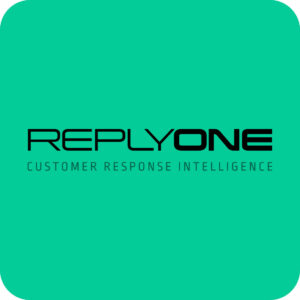Customer communication of the future today
Future Customer Service
How companies can inspire their customers in the future or: "Contact us the way you want!"

06/06/2023
Whether it's a change of budget billing or address or a complaint about a product, today's customers expect to be able to contact customer service easily and resolve their concerns as quickly as possible.
Companies can meet this requirement with smart customer service software. With the help of AI, for example, written inquiries can be analyzed, categorized and forwarded to the responsible person in the service team. Depending on how (fully) automated a company wants to work in customer service, the AI can suggest suitable text modules for answering the inquiry or send them independently (so-called dark processing). This allows service teams to answer queries precisely or have them answered by the AI in a matter of seconds or minutes. And thus guarantee a high quality of service.
Which customer channel should be used for your request to customer service?

However, in addition to top response speed, the way in which a customer can contact the service team can also contribute to an all-round successful customer experience. This is because customers do not want to leave their everyday communication channels to contact the service team. They prefer to communicate in their usual style: via social media, WhatsApp or voice message.
Today, it is almost a matter of course for customers to write to a company's customer service team via Facebook Messenger or Instagram direct message. WhatsApp is also becoming increasingly popular as a communication channel: take a photo, type in your request and send it off.
Just as the use of channels changes over time - new channels and functions are added and create new opportunities - so do the demands customers place on a company's customer service.
Send customer inquiries to the service team via voice messages
An exciting new contact option has recently been added to customer service. "Just send us your request by voice message via WhatsApp!" could be what companies offer their customers. And presumably hit the bull's eye when it comes to the needs of the young customer group.
According to messenger service WhatsApp, seven billion voice messages are sent worldwide every day. sent (WhatsApp 2022). The younger target group in particular loves this type of communication. Especially in comparison to the classic telephone call, which plays an absolutely secondary role for many Generation Z customers (born between 1995 and 2010). According to a study (JIM Study 2018), almost one in five people between the ages of 12 and 19 avoid making phone calls*.

These digital habits influence what the emerging target group expects from good customer service: easy contact via the channels they already use or prefer. Companies should therefore definitely offer several alternatives to the telephone or email.
Voice messages in customer service simplify the contact process
If companies offer their customers in future to send them a short voice message in the queue at the checkout or while waiting for the bus and describe their concerns in a straightforward way, what would that mean for the work of the service teams?
Probably one thing above all: it takes more time. This is because we tend to be more verbose in a spoken message than in a typed message.
The integration of two external services into a customer response software is a good solution to avoid losses in efficiency:
- Voice messages could initially be transcribed using a speech-to-text tool.
- So that the agent does not have to read and understand large amounts of text, another application could summarize the core message from the written voice message.
As a valuable extra service, companies could even offer to send their customers voice messages in their native language. A translation is then simply added between the transcription of the message and the compression of the text. This could be done using DeepL, for example, which is also an AI-based machine translation service. The advantage is obvious: the language barrier and associated comprehension errors are eliminated.
Customer service today and in the future: How to offer the service your customers want
Always keep an eye on what good service means for your customers. About which Channels they want to describe their concerns. Take a close look:
- Who belongs to your customer group?
- Is your target group young or old?
- How does she prefer to communicate?
- Which channels do they prefer?
 No matter which solution you use, the software should be able to grow with you and your individual requirements. This is the only way to ensure that your optimal customer service is not just a snapshot in time, but will also prove itself in the future. When choosing your omnichannel solution, make sure that all contact channels, whether social media or messenger, can be easily integrated.
No matter which solution you use, the software should be able to grow with you and your individual requirements. This is the only way to ensure that your optimal customer service is not just a snapshot in time, but will also prove itself in the future. When choosing your omnichannel solution, make sure that all contact channels, whether social media or messenger, can be easily integrated.
Top customer service of the future today with ReplyOne
Sematell's customer service software already offers the technical possibilities to answer customer inquiries efficiently and precisely.

The AI-based omnichannel software supports over 120 companies in taking their customer service to a new level. The software makes it easy to integrate various smart services. With the additional use of translation software, such as DeepL, customer service could even answer inquiries in multiple languages.
Holger will be presenting our response management solution for hybrid customer communication live at CCW:
Would you like to find out more about how ReplyOne can take your customer service to the next level? Book your free, no-obligation demo now and see for yourself.
How simple can good customer service be?
It's easy!
Free. Fast. Customized.
Or take a look at our Success Stories and find out more about the particular challenges our customers faced and how we tailored the software to their customer service processes and integrated it into their existing systems.
*https://www.nationalgeographic.de/wissenschaft/2023/04/telefonphobie-viele-moeglichkeiten-das-problem-zu-umgehen-angst-psychologie




